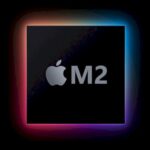
Word to the sensible, should you’re a content material creator or in any other case dabble in photograph and video modifying, Apple’s latest base mannequin MacBook Pro with an M2 processor can change into an actual slog when weighed down with heavier workloads, in accordance with some exams posted on a preferred YouTube channel. The subsequent SKU is proven to be markedly sooner in some cases, whereas the baseline mannequin generally borders on unusable.
You could recall that YouTube channels Max Tech and Created Tech each posted movies final week highlighting the downgraded 256GB SSD efficiency on the baseline M2 MacBook Pro in comparison with the baseline M1 MacBook Pro. What got here to mild is a change is how Apple applied the SSD this time round.
On the M1 MacBook Pro, all fashions sport a pair of NAND flash reminiscence chips for the SSD storage scheme. But on the baseline M2 MacBook Pro with 256GB of storage, Apple switched to a single NAND flash reminiscence chip. This issues as a result of in dual-chip configurations, each can join individually the M2 processor (or M1 within the earlier gen fashions) and fill two storage buses in parallel. But going with a single-chip resolution successfully cuts the bandwidth in half.
The different distinction between the baseline MacBook Pro fashions and the following model up is the quantity of RAM. Apple’s least costly M2 and former era M1 fashions sport 8GB of RAM, whereas stepping up a SKU doubles the RAM to 16GB. So you are taking a look at 8GB of RAM paired with a 256GB SSD, or 16GB of RAM paired with a 512GB SSD.
Following up on the preliminary video showcasing the degraded storage on the baseline M2 MacBook Pro, Max Tech posted one other video, this time evaluating the efficiency of real-world workloads between the 8GB/256GB and 16GB/512GB fashions. It wasn’t fairly.
Source: Max Tech
The channel ran a sequence of exams and benchmarks, a few which you’ll be able to see within the chart above. These exams are meant to indicate what the channel considers typical utilization of a creator who’s contemplating a MacBook Pro, which could embody exporting dozens of RAW photographs in Lightroom Classic with a handful of browser tabs open within the background, and so forth.
In Lightroom Classic, exporting 50 RAW 42MP mages was practically twice as quick on the 16GB/512GB MacBook Pro versus the 8GB/256GB mannequin. And when exporting a 5K HEVC video with 10 tabs open within the background, the the 16GB/512GB mannequin accomplished the duty in half the time. This 12 months’s baseline M2 MacBook Pro was even considerably slower on this take a look at than final 12 months’s baseline M1 MacBook Pro.
Part of the issue is that having simply 8GB of RAM will not be actually sufficient for heavier content material creation workloads. However, switching to a single chip SSD resolution compounds the issue. Having much less RAM means a system shall be faster to leverage swap reminiscence (disk spaced used as RAM), which yields a efficiency hit in and of itself. But on this case, the slower storage of the baseline M2 MacBook Pro provides to the efficiency degradation.
An informal consumer in all probability will not run into this case fairly often. But somebody shopping for a MacBook Pro for extra than simply informal utilization may, and as demonstrated in Max Tech’s video, the outcomes ranged from a minor efficiency affect to a maddeningly sluggish and unresponsive system. And because the RAM and storage are usually not user-upgradeable on the MacBook Pro, anybody shall be performing heavier workloads ought to actually contemplate the 16GB/512GB SKU because the baseline.
Top Image Source: Max Tech (through YouTube)









